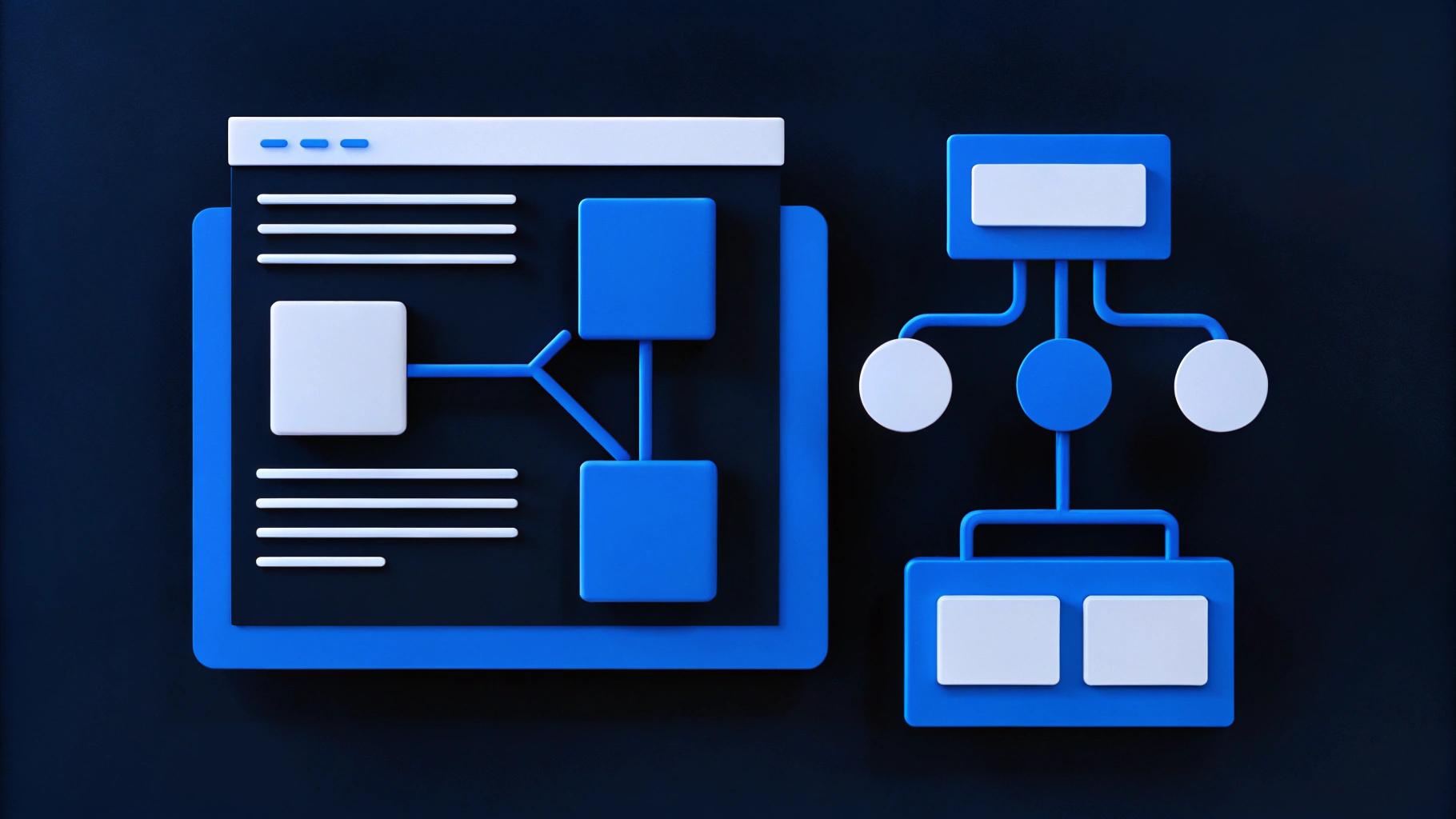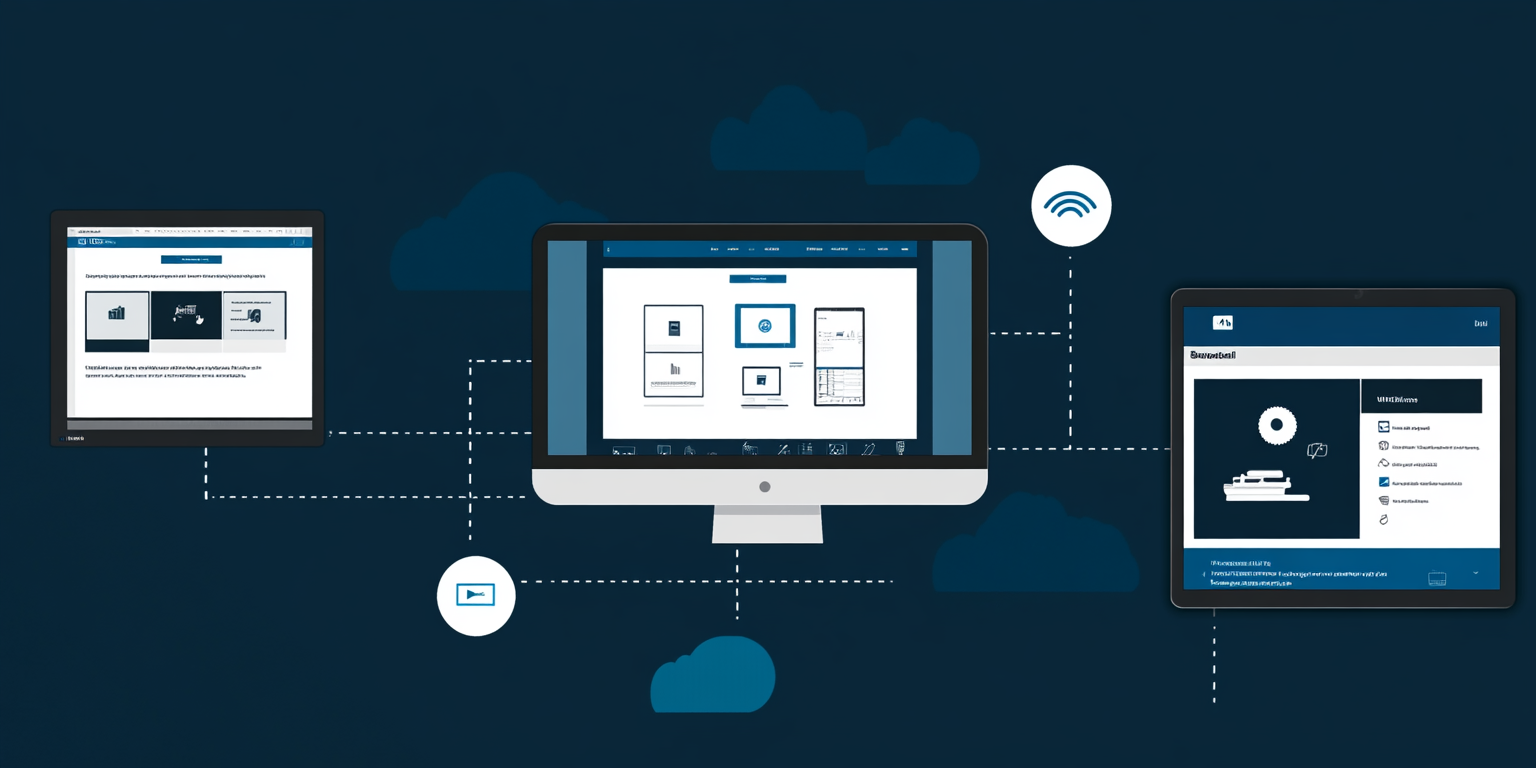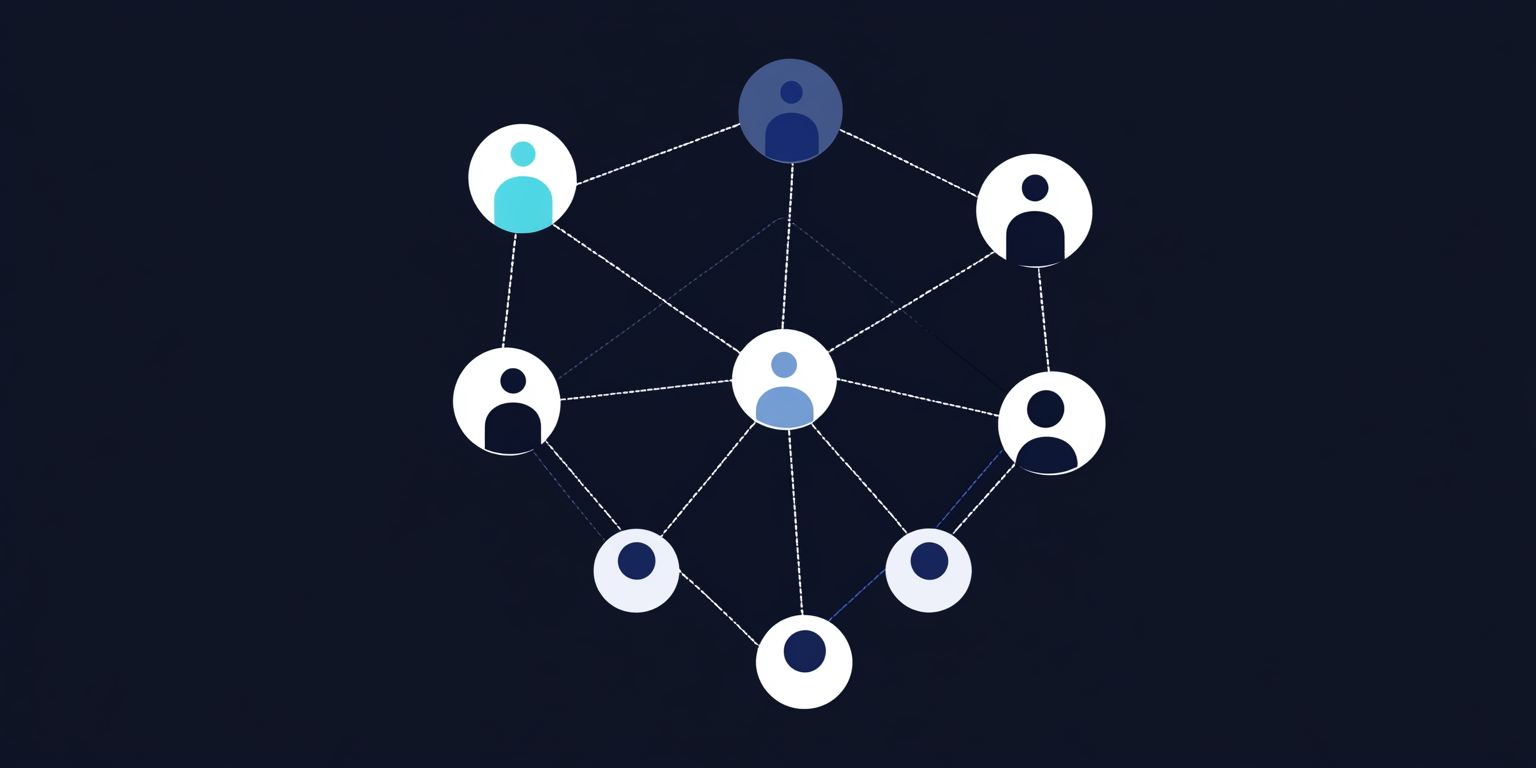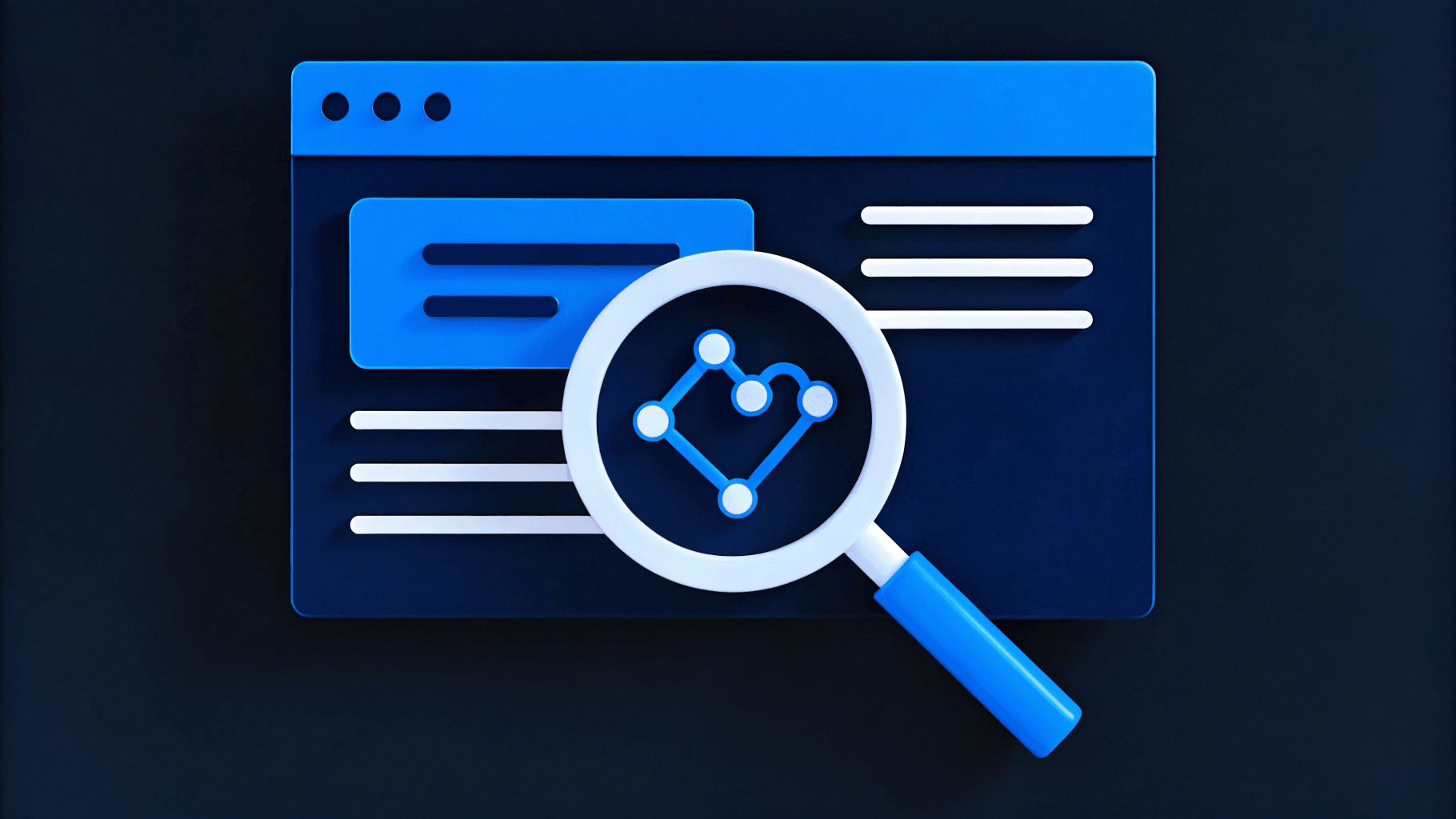Friday, July 11, 2025
How AI in Web Development Is Ending the B2B Redesign Cycle

Most B2B website overhauls still follow the same pattern: a major redesign every few years that costs tens of thousands and still needs updates on launch day. Agencies typically charge between $5,000 and $75,000 for a site redesign.
AI breaks that pattern. It enables continuous updates instead of one-off rebuilds. Models detect user friction in real time, generate new components on demand, and personalize experiences based on live data, not stale assumptions.
Your site becomes an evolving product, not a fixed deliverable. The result: faster launches, lower maintenance costs, and web experiences that stay aligned with your product, your buyers, and your roadmap.

Why the Traditional B2B Redesign Cycle Is Broken
Most mid-market B2B teams still rely on a full-site rebuild every few years. These projects often stretch past six months, cost tens of thousands of dollars, and ship with messaging that’s already out of date. During that time, marketing slows down, product changes pile up, and small updates get buried under sprint planning.
This approach disconnects your brand from what your buyers actually see. Static pages lag behind product launches, new campaigns sit in queues, and even minor changes require dev time. This can make iteration feel expensive and slow.
The rebuild process also adds technical debt. Hard-coded templates, outdated plugins, and inflexible integrations drag down site speed and block future improvements. While teams focus on launch, performance and UX take a backseat, and recovery is rarely prioritized.
Between delayed optimizations, decaying personalization, and inconsistent release schedules, SEO and conversion rates start to suffer. Add the cost of agency work, lost marketing time, and the strain on internal teams, and you’re left with a cycle that’s hard to justify and even harder to sustain.
How AI Reframes Web Development
Traditional B2B websites follow a rigid cycle: long roadmaps, gated handoffs, and code freezes between major launches. Every update runs through developers, which slows campaigns and delays feedback. By the time a change goes live, the opportunity may have passed.
AI changes that. WebOps teams can now use machine learning and automation to ship smaller updates continuously. Instead of treating the site as a static deliverable, AI turns it into a dynamic product that adapts in real time. Friction points are flagged automatically. Design tweaks are proposed based on live user behavior. Iteration becomes part of the daily workflow, not something saved for the next rebuild.
AI-powered tools also reduce the dependency on engineering. Marketers can publish updates, test variations, and manage content using low-code interfaces. Behind the scenes, AI handles layout generation, accessibility checks, and performance optimization. This makes the site more modular, more responsive, and easier to scale without starting over.

Core AI Capabilities That Eliminate Rebuilds
Most redesigns happen because performance, usability, or brand alignment deteriorate over time without anyone catching it early. AI flips that model. Instead of waiting for major issues to pile up, it detects small problems in real time and suggests targeted fixes. The result is a site that evolves incrementally, without expensive resets or stalled marketing cycles.
Real-Time User Experience Analysis
AI-driven analytics go beyond basic page views and bounce rates. They track detailed behavioral signals like scroll patterns, hover pauses, rage clicks, and exit timing. When users consistently abandon a form field or hesitate on a key CTA, the system flags the exact moment and location of friction.
From there, it can recommend layout changes, simplify copy, or trigger an A/B test—all based on real data. Some platforms even deploy the highest-performing variant automatically. This eliminates the need for manual UX audits, providing teams with continuous feedback without slowing down campaign delivery.
AI tools that support real-time UX analysis include:
- SpeedCurve: Monitors Core Web Vitals in real time and overlays them with UX metrics like bounce rate and conversion, helping teams tie frontend performance to business outcomes. It also surfaces layout shifts and rendering issues that users actually feel.
- FullStory: Uses session replays, heatmaps, and machine learning to detect user frustration signals like rage clicks, dead clicks, and rapid cursor movements. It flags these patterns across user sessions to show which experiences break down most often.
- Contentsquare: Applies AI to aggregate and segment behavioral data across pages. It automatically identifies UX anomalies, such as a form field that’s consistently abandoned or a button that's never clicked, and quantifies their business impact.
Generative Design and Content Creation
AI-powered design tools now generate branded layouts from simple prompts: headers, hero sections, or full landing pages that align with your design system. Instead of waiting weeks for agency mockups, your team can generate and deploy a draft same-day, then test and iterate based on real performance data.
Tools enabling this capability:
- Builder.io AI Copilot: Generates layout and content suggestions directly within the visual editor. Designers and marketers can prompt Copilot to create new pages, sections, or components based on your design system, reducing the need for dev time on basic layout work.
- Jasper: Used by B2B marketing teams to create ad copy, landing page content, CTAs, and blog posts. Teams can build prompt templates for specific personas or funnel stages, speeding up production while staying on-brand.
- Vev: A no-code visual builder with generative capabilities that help create interactive designs and animations. It works well for marketing teams who want to build dynamic pages without developer involvement.
Designers spend less time on repetitive layout work and more time refining creative direction. This reduces turnaround time, shrinks external spend, and keeps momentum with marketing and product teams.
Predictive Performance Monitoring
Most performance issues go unnoticed until conversion rates drop or users complain. AI models trained on historical telemetry catch problems earlier. They flag JavaScript bloat, layout shifts, memory leaks, and latency spikes, often during staging.
These anomalies trigger alerts or automatic rollbacks before degraded performance reaches production. With predictive monitoring in place, teams maintain uptime, protect UX, and avoid the slow erosion that typically triggers a full redesign.
Tools that bring predictive monitoring into modern web workflows:
- SpeedCurve: Goes beyond real-time monitoring with historical baselines and forecast models. It detects gradual performance regressions, like creeping increases in Largest Contentful Paint (LCP), and alerts teams before users notice. It also ties performance metrics to business KPIs like bounce or engagement.
- Raygun APM + real user monitoring: Tracks live application performance across browsers and geographies, then applies ML (machine learning) to predict where performance bottlenecks are forming. Great for identifying which routes or features are degrading before they trigger support tickets.
Dynamic Personalization
In B2B, static messaging often becomes outdated before it’s updated. AI engines solve this by analyzing visitor data, like industry, funnel stage, past behavior, and assembling relevant copy blocks concurrently.
Tools that support AI-driven personalization include:
- Shaped: Uses real-time behavioral signals and machine learning to rank content, offers, or products for each visitor. Built for marketplaces and platforms, it supports personalized ranking at scale without the need for rules or user segmentation.
- Unless: Offers AI-based behavioral targeting and in-session personalization. It adapts content based on traffic source, browsing history, or actions taken on-site, and can test variations automatically to improve conversion rates.
- Optimizely Web Experimentation + Personalization: Combines experimentation with AI-powered targeting. It personalizes at the experience level — adapting layouts, messages, and recommendations based on user data — while testing which variation performs best.
Headlines, case studies, and CTAs update dynamically without manual rewrites. This keeps pages aligned with buyer needs, improves engagement across segments, and reduces reliance on generic, one-size-fits-all templates.
Intelligent Content Management
Modern CMS platforms now embed AI directly into the editing interface. Marketers can adjust hero copy, update navigation, or launch a new landing page, all without waiting on developer resources.
Tools that support intelligent content management include:
- Sanity + AI Assist: Sanity’s content lake architecture allows structured content at scale. With the AI Assist plugin, editors can summarize, translate, or rewrite content directly within the CMS, all within predefined content models.
- Contentful + Compose & Launch: Offers AI-assisted tagging, content modeling, and publishing workflows. Editors can generate page drafts from briefs, while custom roles and environments keep teams aligned across regions and campaigns.
- Strapi with AI plugins: Open-source and fully customizable, Strapi supports integrations with OpenAI and Hugging Face for use cases like auto-generating content descriptions, summaries, and SEO metadata inside the CMS.
Changes are still governed by structured content models and role-based permissions, which prevent off-brand or unapproved edits. Teams move faster without compromising system integrity or introducing shadow IT risks.
Building a Composable, AI-Ready Web Stack
A composable web stack replaces rigid, all-in-one platforms with modular tools that connect through APIs. The foundation starts with a headless CMS like Contentful, Sanity, or Strapi, where content is stored in structured models instead of being tied to templates.
Next, a design-token system and a versioned component library allow marketers to reuse approved UI elements without relying on developers. Front-end frameworks like React, Vue, Next.js, or Gatsby manage rendering. Microservices handle search, authentication, personalization, and other key functions through secure, isolated APIs.
To support continuous improvement, real-time analytics should feed directly into your AI systems. This allows models to adapt based on live user behavior, identifying friction points, optimizing layouts, and delivering personalized content without waiting for a full-site audit.
Run a quick check on your setup:
- Can your CMS deliver content through GraphQL or REST to any front end?
- Do you maintain structured design tokens and a versioned component library?
- Can services deploy independently without impacting the entire site?
If not, moving to a composable stack is the first step toward agility. AI makes that stack more responsive by adding automation and intelligence without requiring a full rebuild. You can drop in AI copilots, performance agents, or personalization engines as needed, replacing individual services without touching the rest of your system.
This structure replaces high-risk redesigns with smaller, targeted improvements that keep your site aligned with product updates, campaign launches, and buyer behavior.
Build Better Websites with Webstacks
Traditional rebuild cycles drain resources and stall growth. AI and composable architecture make it possible to shift to a continuous improvement model—but only if the underlying systems are set up for it.
Webstacks helps B2B teams move from static platforms to modular, AI-ready stacks. We implement headless CMS architectures, reusable component libraries, and design-token systems that give marketers control without breaking development workflows.
Our team layers in governance, observability, and performance automation so every update stays on brand, accessible, and measurable. You get a flexible foundation built for daily iteration, not quarterly fire drills. If your current site can't keep up with your product or marketing velocity, we can help. Connect with our team for a consultation to evaluate how AI-ready your stack really is.



